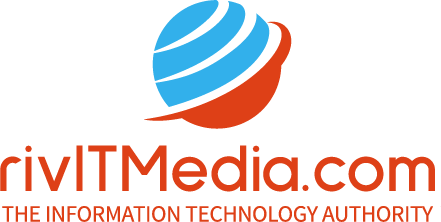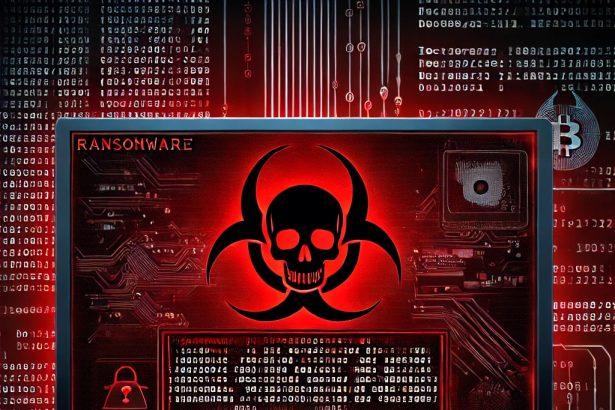The Nezha ransomware is a newly discovered file-encrypting virus that locks your personal data and appends the .nezhaextension to each file it touches. Like other modern ransomware strains, it demands payment in cryptocurrency for a decryption key. Victims are shown a text ransom note urging them to contact the attackers and negotiate. Unfortunately, paying rarely leads to full file recovery—and can even expose you to further extortion.
Nezha can sneak onto systems through malicious email attachments, pirated software downloads, and trojanized installers. Once inside, it aggressively scrambles important files and disables recovery options.
Nezha Ransomware Overview
| Threat Type | Ransomware |
|---|---|
| Encrypted Extension | .nezha |
| Ransom Note Filename | README.txt |
| Email Contact | nezha@tutanota.com |
| Detection Names | Trojan.Ransom.Nezha, Win32/Filecoder.Nezha, Ransom:Win32/Nezha |
| Symptoms | Files renamed with .nezha, ransom note dropped, cannot open documents/photos |
| Damage + Distribution | Encrypts all personal data, demands ransom; spreads via infected files, cracked software, malicious ads |
| Danger Level | 🔥 Extreme – File loss is highly likely without backups |
👉 Download SpyHunter to Scan for Nezha Ransomware →
How Did I Get Infected With Nezha Ransomware?
Nezha typically infiltrates systems via one of the following vectors:
- Phishing Emails: You may have opened a seemingly legitimate invoice or resume attachment.
- Cracked Software: Bundled with pirated apps, keygens, or game cheats.
- Malicious Websites or Ads: Drive-by downloads from unsafe domains.
- Trojan Downloaders: Hidden in installers from third-party sites.
Once executed, the ransomware silently begins its encryption routine—locking hundreds of file types without warning.
What Nezha Ransomware Does to Your Files
Nezha targets a wide range of file types including .docx, .pdf, .jpg, .mp4, .zip, and even backups like .bak or .db. It renames each file with a .nezha extension, making it completely unreadable to your programs.
For example:
photo.jpg → photo.jpg.nezha
report.docx → report.docx.nezha
Then it drops a ransom note named README.txt in every folder it touches. This note contains instructions for contacting the cybercriminals—usually via Tutanota or ProtonMail—and threatens permanent data loss unless the ransom is paid.
Should You Be Worried About Nezha Ransomware?
Yes—Nezha is a high-risk ransomware variant that causes severe data loss. If you don’t have clean backups stored offline, recovery can be extremely difficult. There’s no known free decryptor for Nezha as of now.
Paying the ransom might seem tempting, but:
- There’s no guarantee the criminals will give you a working key.
- You’re funding cybercrime—and possibly inviting more attacks.
- Some attackers ask for more money after initial payment.
Instead, focus on safe system cleanup, backing up encrypted files, and consulting a professional or ransomware response service.
Ransom Note Dropped by Nezha
The README.txt file contains the following typical message:
“All your files have been encrypted with Nezha ransomware.
Contact us at nezha@tutanota.com for decryption instructions.
Do not try to recover your files or you may lose them forever.”
Attackers sometimes demand proof that you’re serious by asking for one or two files to decrypt for free. This is just bait to get you to pay.
Manual Ransomware Removal Process
Important: Manual removal is recommended only for experienced users, as incorrect actions can lead to data loss or incomplete removal of the ransomware. If unsure, consider the SpyHunter Removal Method for a guided, automated solution.
Step 1: Disconnect from the Internet
- Immediately disable Wi-Fi or unplug the Ethernet cable to prevent the ransomware from communicating with remote servers.
- This can prevent additional encryption or further infections.
Step 2: Boot into Safe Mode
For Windows Users
- Windows 10/11:
- Press Windows + R, type
msconfig, and press Enter. - Under the Boot tab, select Safe boot and check Network.
- Click Apply, then OK, and restart your PC.
- Press Windows + R, type
- Windows 7/8:
- Restart your PC and press F8 repeatedly before Windows starts.
- Select Safe Mode with Networking and press Enter.
For Mac Users
- Restart your Mac and hold the Shift key immediately after the startup chime.
- Release the key when the Apple logo appears.
- Your Mac will boot in Safe Mode.
Step 3: Identify and Terminate Malicious Processes
Windows
- Open Task Manager by pressing Ctrl + Shift + Esc.
- Look for unusual processes consuming high CPU or memory.
- Right-click on the suspicious process and select End Task.
Mac
- Open Activity Monitor (Finder > Applications > Utilities > Activity Monitor).
- Look for unknown or high-resource-consuming processes.
- Select the suspicious process and click Force Quit.
Step 4: Delete Ransomware Files
Windows
- Open File Explorer and navigate to:
C:\Users\[Your Username]\AppData\LocalC:\Users\[Your Username]\AppData\RoamingC:\Windows\System32
- Identify and delete suspicious files (randomly named or recently modified items).
- Clear temporary files:
- Press Windows + R, type
%temp%, and hit Enter. - Delete all files in the Temp folder.
- Press Windows + R, type
Mac
- Open Finder and select Go > Go to Folder.
- Type
~/Library/Application Supportand check for unfamiliar files or folders. - Remove unknown
.plistfiles from~/Library/LaunchAgents.
Step 5: Remove Ransomware Entries from Registry or System Settings
Windows
- Press Windows + R, type
regedit, and hit Enter. - Navigate to:
HKEY_CURRENT_USER\SoftwareHKEY_LOCAL_MACHINE\Software
- Identify and delete ransomware-related registry entries.
Mac
- Open System Preferences > Users & Groups.
- Select the Login Items tab and remove any unknown startup programs.
- Check
~/Library/Preferencesfor malicious settings.
Step 6: Restore System Using a Backup or Restore Point
Windows
- Press Windows + R, type
rstrui, and press Enter. - Choose a restore point from before the infection and proceed.
Mac
- Restart your Mac and enter macOS Utilities by holding Command + R.
- Select Restore from Time Machine Backup and restore a safe backup.
Step 7: Attempt to Decrypt Files
- Check No More Ransom (www.nomoreransom.org) for available decryption tools.
- If unavailable, restore files from backups.
Automated Ransomware Removal with SpyHunter
If manual removal is too complex or risky, SpyHunter offers a safer, automated method for detecting and removing ransomware.
Step 1: Download SpyHunter
- Get SpyHunter from the official Enigma Software website.
Step 2: Install SpyHunter
- Open the downloaded file (
SpyHunter-Installer.exeor.dmgfor Mac users). - Follow the installation prompts.
- Launch SpyHunter upon completion.
Step 3: Run a Full System Scan
- Click Start Scan Now to detect malware and ransomware.
- Wait for the scan to complete and review detected threats.
Step 4: Remove Detected Ransomware
- Click Fix Threats to remove identified ransomware components.
- SpyHunter will clean your system automatically.
Step 5: SpyHunter’s Custom Malware HelpDesk
- If ransomware persists, use SpyHunter’s Malware HelpDesk for custom malware fixes.
Step 6: Restore Files
- Use backups stored on external drives or cloud storage.
- If no backup is available, check No More Ransom for decryption tools.
Preventing Future Ransomware Attacks
- Keep backups: Use cloud storage or an external hard drive.
- Install a reliable security tool: SpyHunter offers real-time protection against malware.
- Enable Windows Defender or Mac security features for additional protection.
- Avoid phishing emails and unknown attachments.
- Regularly update Windows, macOS, and installed applications.
Conclusion
Nezha ransomware is a dangerous and rapidly spreading threat that can completely lock you out of your data. If you’ve been infected:
- Do NOT pay the ransom.
- Disconnect the device from your network.
- Use anti-malware tools like SpyHunter to scan and clean your system.
- Back up encrypted files in case a decryptor becomes available in the future.
Recovering from ransomware is hard—but not impossible if you act quickly and avoid risky decisions.




